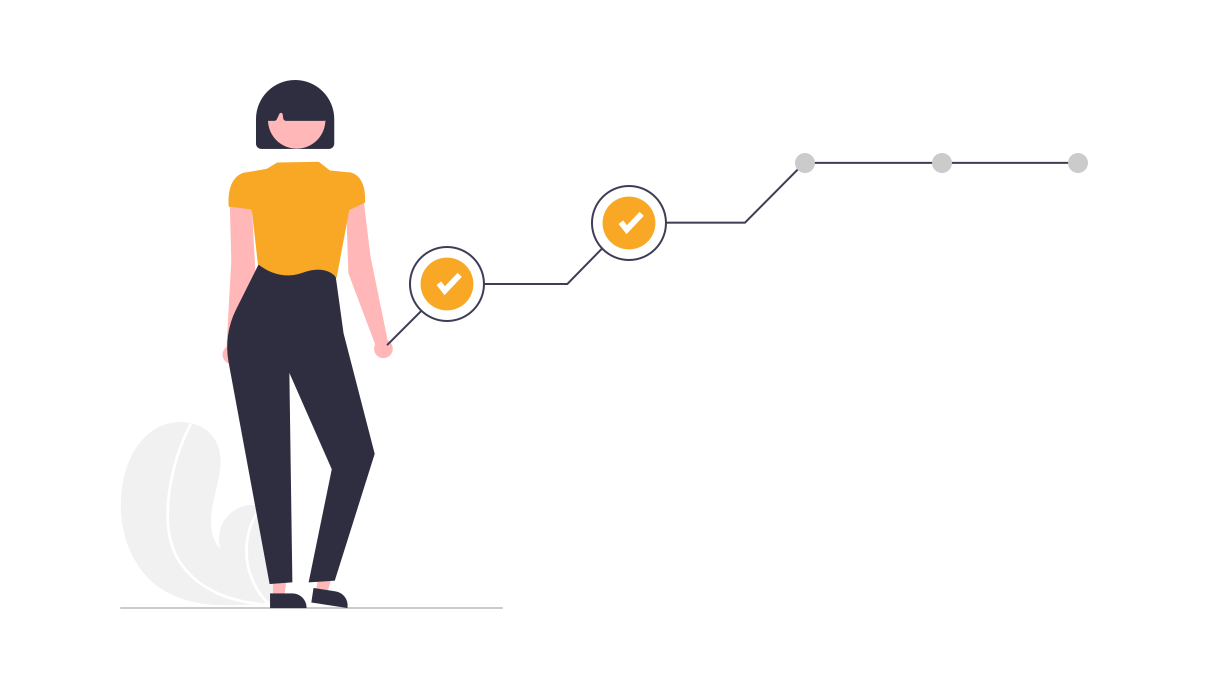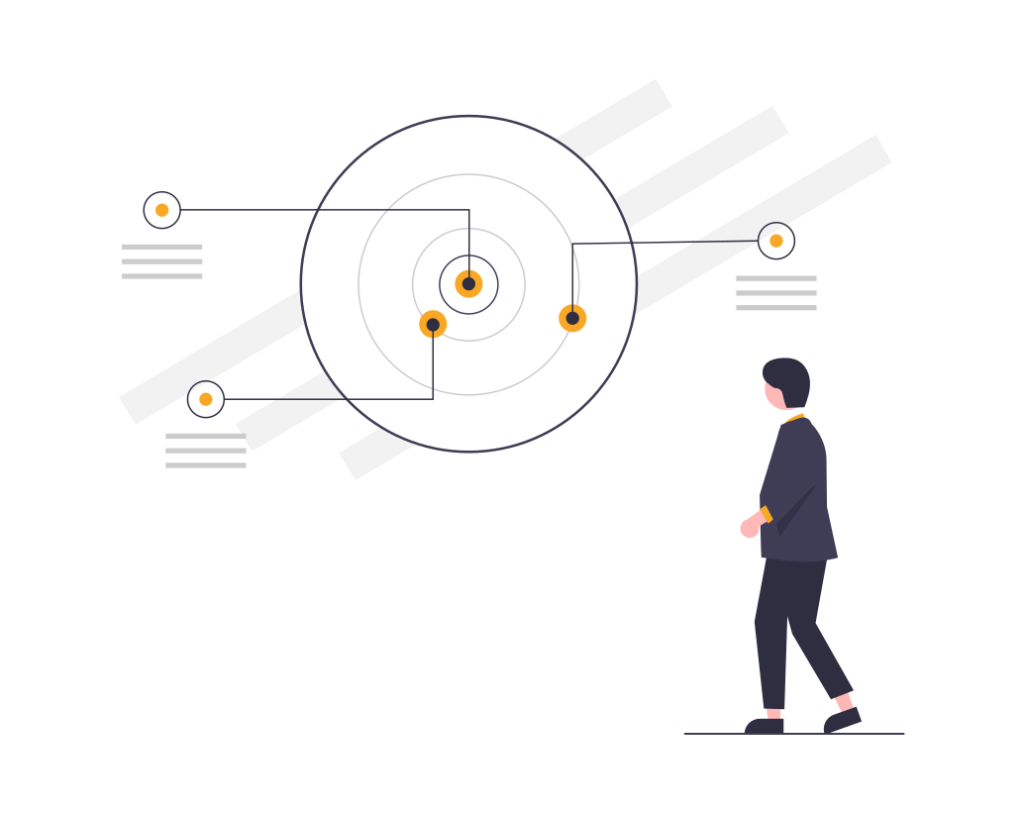Software modernization
In the following article, you’ll learn what software modernization is and how you can use it to improve the performances of your company.

What is software modernization?
Software modernization is defined as the process of updating, optimizing, or restructuring existing software applications, with the aim to make them more efficient, secure, and user-friendly.
Software modernization can encompass various aspects, such as migrating to new platforms, updating programming languages, or improving the user interface. Sometimes, a major overhaul may be necessary. Software modernization becomes particularly important when dealing with legacy systems.
Why is important to modernize legacy systems?
Legacy systems often pose challenges for businesses and organizations. These systems are typically outdated and built on obsolete technologies, programming languages, or hardware. This can lead to various issues:
Inefficiency: Legacy systems are often slow and unable to keep up with today’s demands for performance and scalability. They can thus cause bottlenecks and become a hindrance to user productivity.
High maintenance costs: Outdated systems often require specialized resources and expensive license fees. Maintenance and troubleshooting become increasingly difficult and costly, as there may be few experts available to support the outdated system.
IT Security risks: Legacy systems are prone to security vulnerabilities and breaches, as they may not be compatible with the latest security standards and practices. This can result in data loss, unauthorized access, or even compliance violations.
Lack of integration: Legacy systems can create challenges when it comes to integrating with new systems, applications, or tools. This can hinder information flow and collaboration between different departments and systems.
Given these issues, it is important to develop an effective software modernization strategy to leverage the benefits of newer technologies and systems.
Benefits of software modernization in companies
Software modernization offers a variety of compelling benefits to companies. Some of the key advantages are summarized below.
Improved Performance and scalability: By updating outdated software, businesses can enhance their performance and scalability. Modern software solutions are typically more efficient and capable of better handling growing demands and user numbers.
Long-term cost efficiency: Although software modernization may initially involve costs, businesses can use it to achieve long-term cost savings. By reducing maintenance and support expenses for outdated systems and improving efficiency, organizations are able to better optimize their expenditures.
Increased security: Outdated systems are more vulnerable to security risks. Through software modernization, businesses can address security gaps and better protect their data and applications. Updated systems enable the implementation of modern security mechanisms and regular updates to stay ahead of emerging threats.
Better integration and collaboration: Modern software solutions generally offer improved integration capabilities. Businesses can seamlessly connect different systems and applications when they are on the same technology level. This enhances information flow and facilitates collaboration among different departments and teams. This also allows for an overall future-proofing of all systems.
Higher user satisfaction: Software modernization can enhance the user experience for employees and customers. An optimized user interface, faster response times, and new features can contribute to their increased satisfaction and enable more efficient work processes.
Competitive advantages: Businesses that modernize their software can gain a competitive edge. With modern and agile solutions, they can be more innovative, respond faster to market changes, and provide better services and products to their customers.
Overall, software modernization provides businesses with opportunities to enhance their efficiency, security, and competitiveness. However, achieving these benefits requires taking certain steps.

The necessary steps for IT modernization
A successful IT modernization requires careful planning and implementation. In this section, we will look at some of the steps that need to be considered when conducting a successful software modernization. Some of these steps may require specific expertise, and it is advisable to seek external assistance if needed.
Assessment of your current systems: The first step is to conduct a thorough assessment of the existing systems. Identify the weaknesses, bottlenecks, and security risks in your legacy systems. Analyze the requirements of the users, IT, and other stakeholders to define the objectives of the modernization.
Developing a modernization strategy: Based on the assessment, you can develop a comprehensive modernization strategy. Define clear goals, milestones, and the scope of the modernization. Decide which aspects of the software need to be updated, such as the platform, programming languages, databases, or user interfaces. It is important to prioritize the systems to be modernized and to identify dependencies.
Selection of the right technologies: Identify the appropriate technologies or technology stacks and the tools required for modernization. Consider factors such as future-proofing, scalability, security, integration capabilities, and user-friendliness. A detailed technical plan and roadmap are helpful in making the right decisions.
Implementation of modernization: Implement the planned modernization steps. This may involve updating code, migrating data, integrating new components, or developing new features. Ensure that adequate testing and thorough quality assurance are conducted to minimize errors and downtime. Such a comprehensive project should ideally be carried out in an agile manner.
Training and change management: Consider the impact of modernization on employees and other stakeholders. Provide training and support to ensure that the teams can effectively manage and use the new systems. For larger user groups, it helps to train multiplicators, who can then train their colleagues in the new systems. Implement a change management program to ensure acceptance and a smooth transition to the modernized software.
Monitoring and continuous improvement: After modernization, it is important to continuously monitor the performance and efficiency of the new software. Gather feedback from users and team members and make adjustments as needed. Implement regular updates and upgrades to keep the software up to date.
IT modernization is an iterative process that requires ongoing adjustments and improvements. The question now is, when is the right time to embark on such a project?
When should you modernize your software?
How high is your company’s pain threshold? The decision of when to modernize your software depends on various factors. Here are some signs that it is time to bring your software up to date:
Outdated technologies: If your software is based on outdated technologies that are no longer supported or do not meet current standards, then it is time for modernization. This may include migrating to a more current platform, a newer programming language, or an updated database.
Scalability issues: If your software struggles to keep up with growing user numbers or increasing demands, then it may also be a sign that modernization is necessary. An updated architecture and technology can help improve the scalability and performance of your software.
Security risks: If your software application is vulnerable to security vulnerabilities or does not meet current security standards, you should consider modernization. Security should be a high priority, and updating your software can help better protect your systems. Analysing this aspect might require a pentesting session.
User dissatisfaction: If your users are dissatisfied with the usability, speed, or functionality of your software, it can be a clear signal that modernization is needed. By improving the user experience, you can increase user satisfaction and productivity.
Integration difficulties: If your software has difficulties integrating with other systems or applications, it can hinder efficiency and information flow. In the worst case, it can completely hinder other important projects. Modernization can help improve the interaction of different systems within your IT landscape.
It is important to conduct regular and careful assessments of your current software solutions and consider the signs mentioned above. Only then will you be able to intervene in a timely manner. Early software modernization will help avoid potential problems and replace them with the benefits mentioned above. Of course, the costs associated with a software modernization project should also be taken into account.
The costs of software modernization and how to estimate it
The costs of software modernization can vary greatly depending on the scope, complexity, and individual requirements of the project. There are several factors that can contribute to the costs:
Analysis and planning: The first step of software modernization involves analyzing the existing system and planning the modernization strategy. This phase requires resources such as time and expertise, which may need to be sourced externally, to understand the requirements, identify potential solutions, and create a detailed plan.
Development and Implementation: The actual implementation of the modernization requires development work, including programming and implementing the new functionalities, data migration, or transitioning to new platforms.
Testing and quality assurance: To ensure that the modernized software functions correctly, an extensive testing program and quality assurance are required. This may include manual testing, test automation, and other testing methods. The costs of test resources and the required time should be taken into account.
Project management: Well-organized project management is important to efficiently steer and monitor the modernization process. This includes coordinating teams, communicating with stakeholders, managing risks, and scheduling.
Training and support: When implementing a new system, training, and support for employees may be necessary to ensure they understand and can effectively use the new features and processes. These training sessions and ongoing support can incur additional costs. However, these costs can be minimized if conducted in-house and, if possible, using multiplicators to train colleagues.

How can the costs of modernizing software be better estimated?
To estimate the costs of software modernization effectively, consider the following steps:
Evaluation of the current system: A thorough evaluation of the current system helps understand the scope and complexity of the modernization. Identify specific areas that need improvement or updating.
Requirements analysis: Define clear requirements and goals for the modernization. This helps assess the necessary resources and workload.
Seek expert opinions: Consult experienced software developers or consultants to obtain an informed estimate of the costs. Experts can provide realistic estimates based on their experience and expertise.
Consider risks and buffers: It is important to consider potential risks or unforeseen issues and allocate a buffer for additional costs.
Compare quotes: Obtain multiple quotes from software development companies and compare them based on cost, scope, and quality of services. Also, compare the relevant technologies. Free open-source technologies may be enticing but also have potential pitfalls in terms of reliability, support, and continued development.
Best Practices for IT Modernization
There are best practices in IT modernization that can help you and your company succeed in your software modernization efforts and achieve the desired results.
Holistic approach: Take a holistic perspective and consider modernization as a strategic endeavor. Consider not only the technical aspects but also the business goals, the requirements of all stakeholders, and the organizational influences.
Clear goals and roadmap: Define clear, achievable goals and milestones for modernization. Transparency is also important! Create a roadmap that breaks down the modernization process into clearly defined phases. This helps your team track progress and effectively manage the project.
Apply agile methods: Consider applying agile methods such as Scrum or Kanban to divide your modernization project into smaller, iterative steps.
Communication and stakeholder engagement: Communicate transparently and regularly with all relevant stakeholders, including users, executives, and your IT team. Ensure that stakeholders are involved in the modernization process and that their needs and concerns are taken into account.
Sufficient resources: Ensure that sufficient resources, including expertise, budget, and time, are available for modernization. Identify the required team and ensure they have the necessary skills and capacity. Don’t hesitate to supplement them with external resources.
Risk management: Identify and assess the potential risks associated with modernization and develop strategies to proactively address them. Continuously monitor risk sources and take timely actions to minimize potential negative impacts.
Consider security aspects: Security should be an integral part of your modernization strategy and its projects. Implement modern security standards, technologies, and best practices to minimize potential vulnerabilities and ensure the integrity and confidentiality of your data. Regularly probe your systems for security weaknesses.
Continuous improvement: Modernization is an ongoing process. Implement mechanisms to receive continuous feedback from users and team members and continuously improve the software solution based on this feedback.
By following these best practices, you can increase the chances of successful and effective IT modernization. It is important to note that each modernization situation is unique, and it may be worthwhile to seek specific advice from experts to consider your individual requirements and goals. Involving experienced software development companies and IT consultants can help you smoothly and efficiently carry out your modernization process.
Trends, technologies, and common challenges in Switzerland regarding software modernization
Switzerland is known for its innovation and technological advancement. When it comes to software modernization, there are several trends, technologies, and challenges that are particularly relevant in Switzerland:
Software modernization trends
Cloud-based solutions: Cloud technology has been playing an increasingly crucial role in software modernization for some time. Swiss companies are increasingly using cloud platforms such as Amazon Web Services (AWS), Microsoft Azure, and Google Cloud to host, scale, and modernize their applications. The use of cloud technologies enables flexible scalability, improved availability, and cost savings. This trend is expected to continue in the future.
Microservices and containerization: The adoption of microservices architectures and containerization technologies such as Docker and Kubernetes is gaining traction in Switzerland. By breaking applications into smaller, independently deployable components, businesses can more easily maintain, update, and scale their software. This of course is highly beneficial to software modernisation efforts, as dependencies are reduced significantly.
Agile development methods: Agile methods such as Scrum and Kanban are already widely adopted in the Swiss software industry. Other companies are also embracing iterative development, continuous integration, and rapid deployment to make software modernization more efficient and flexible.
Data analytics and artificial intelligence: Switzerland is also on its way to becoming one of the leading countries in the fields of data analytics and artificial intelligence. Companies are leveraging advanced analytics techniques, machine learning, and AI algorithms to extract valuable insights from their data and develop smarter software solutions.
Security and data privacy: Due to stringent Swiss data protection laws and high-security requirements, ensuring security and data privacy is of great importance for Swiss software modernization efforts. Swiss companies must ensure that their modernized systems comply with applicable standards and adequately protect their customers’ data.
Software modernization challenges
Despite technological progress and innovation, there are also challenges associated with software modernization in Switzerland:
Legacy systems and complex infrastructures: Many companies in Switzerland still operate legacy systems within complex IT infrastructures, which can make modernization challenging. Integrating new technologies into such systems will have to overcome significant technical obstacles.
Compliance requirements: Switzerland has strict compliance requirements, particularly regarding data protection and financial services. Compliance with these regulations can pose challenges in software modernization and requires a comprehensive understanding of legal provisions.
To address these challenges and leverage the trends and technologies, it is important to engage in thorough planning, collaborate closely with experienced IT partners, set clear goals, and adopt an agile approach.

Software modernization – final remarks
Software modernization is a crucial step for companies to keep up with constantly changing technologies, customer requirements, and competitive landscapes. It is therefore important to understand the significance of software modernization and its associated benefits, steps, risks, and costs.
By updating outdated systems and adopting modern technologies, companies can also become more flexible, agile, and better prepared to meet evolving market demands.
It is important to note that software modernization is a complex process that requires careful planning, resource allocation, and expertise. Collaborating with experienced IT partners can significantly support the success of software modernization projects.
FAQs
What is the difference between developing entirely new software and modernizing existing software?
The main difference between developing entirely new software and modernizing existing software lies in the fact that developing new software means creating an application from scratch, while modernizing existing software involves updating, enhancing, and adapting an existing application to current requirements without completely rebuilding it. The decision between these approaches depends on various factors such as cost, time frame, functionality requirements, and the complexity of the existing software.
What role can a cloud infrastructure play in IT modernization?
Cloud infrastructures play a crucial role in IT modernization as they allow companies to migrate their existing IT systems and applications to the cloud. This enables flexible scalability, improved availability, simplified maintenance, and cost savings. By leveraging cloud infrastructures, companies can also benefit from modern technologies, automated deployment processes, and easier integration capabilities, leading to a more efficient and agile IT infrastructure.
How can one effectively select the right provider for IT modernization?
When selecting the right provider for IT modernization, several factors should be considered. These include the provider’s experience and expertise in software modernization, references and customer reviews, the ability to offer tailored solutions, collaboration with internal teams, support and resource availability, as well as compliance with security and compliance standards. Thoroughly evaluating these criteria and conducting pilot projects or proof-of-concepts can help you find the right provider for your IT modernization.
72.Services – your legacy software modernization company
Are you planning an extensive software modernization project? We’re here to help! With more than 27 years of experience, Simon Martinelli, our owner, has helped numerous Swiss companies migrate their legacy systems and modernize their software. With us you are in safe hands! Contact us today.
- Microservices - 18.01.2024
- The True Value of Microservices - 15.01.2024
- IT Security Risks - 25.12.2023
